Why Jesus Never Ate a Banana
About 69 percent of the global diet is “foreign,” says a study that pinpoints the origin of 151 food crops.
You cannot walk on water or raise the dead. But you can do something that Jesus never did: eat a banana. Or a tomato. Or a potato. Just walk into any supermarket on the planet to get either of those, or any of the other once-regional crops that have gone global since Golgotha.
This map shows the various regions of origin for 151 of today’s staple food crops. It illustrates an astounding fact that has become so commonplace that we hardly ever give it a thought: just how “foreign” much of the food on our plates actually is.

Merciless mixing of old and new
Those bananas Jesus never ate? They come from South Asia. And those tomatoes and potatoes? We now firmly associate them with the kitchens of Italy and Ireland, respectively. But they are both natively American. The latter two crossed the Atlantic in what became known as the Columbian Exchange: the merciless mixing of Old and New World things after 1492.
With the specter of famine forever hanging over pre-modern society, new cultivars were eagerly sought out and brought over. In 1551, the Spanish saw their first potato, high up in the Andes. In 1567, just 16 years later, they were already growing them on the Canary Islands.
That has been the rule ever since: if it fills bellies, it travels. Crops from anywhere are now grown and consumed just about everywhere. Food, it can certainly be argued, is the most globalized commodity on the planet. And the process is still ongoing. In 1961, food crops originating outside the bioregion where they were consumed constituted 63 percent of the global diet. Fifty years on, that share has risen to 69 percent.

“We increasingly depend on each other’s plants”, say the researchers who wrote the paper on food origins that is illustrated by this map (and other interactive graphs). So, where do our favorite foods come from?
Before looking at the map itself, one important caveat: some crops have multiple regions of origin, having been domesticated at different times, in different places, by different people. Wheat, for example, was cultivated in both Central and West Asia and in both the South and East Mediterranean. Hence the doubles on the map.
The entire map is here; below are some highlights.
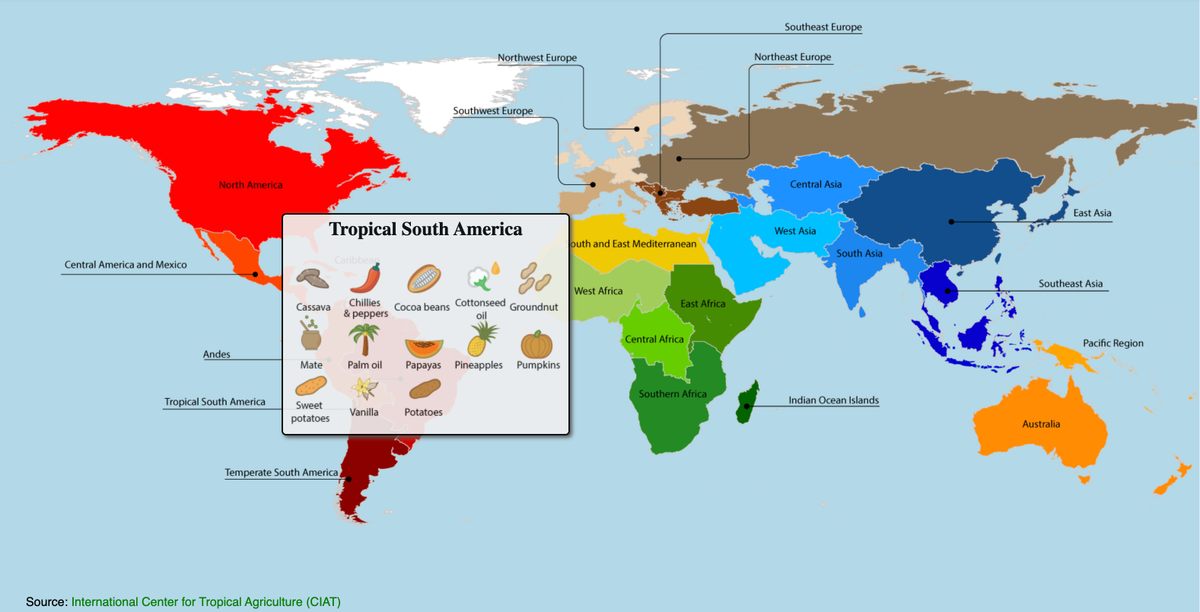
America
Global staples originating in North America include blueberries and cranberries, pumpkins and gourds, and — perhaps most significant economically — sunflowers. Tropical South America gave the world pineapples, papayas, palm oil, and cocoa, the raw material for chocolate. Without the Andes, we wouldn’t have any tomatoes or potatoes — not to mention quinoa.
Africa
Among the crops domesticated in both East and West Africa are coffee and millets, melons, and sorghum. West and Central Africa are home to palm oil, rice, and kola nuts. In Southern Africa, there are watermelon and peppermint.
Europe
Apples, asparagus, hazelnuts? Lettuce, hops, and sugar beets? The world has Northeast (and Northwest) Europe to thank for those. Anise and figs came from Southwest Europe; walnuts and cherries from Southeast Europe.
Asia/Pacific
Spinach, hemp, and pistachios all go back to Central Asia, while East Asia is the original home of peaches and nectarines, tangerines, and mandarins, as well as cucumbers and kiwis. Eggplants, grapefruit, mangoes, and melons are Southeast Asian natives. From the Pacific region come coconuts. Australia’s only contribution to global food is the Macadamia nut.
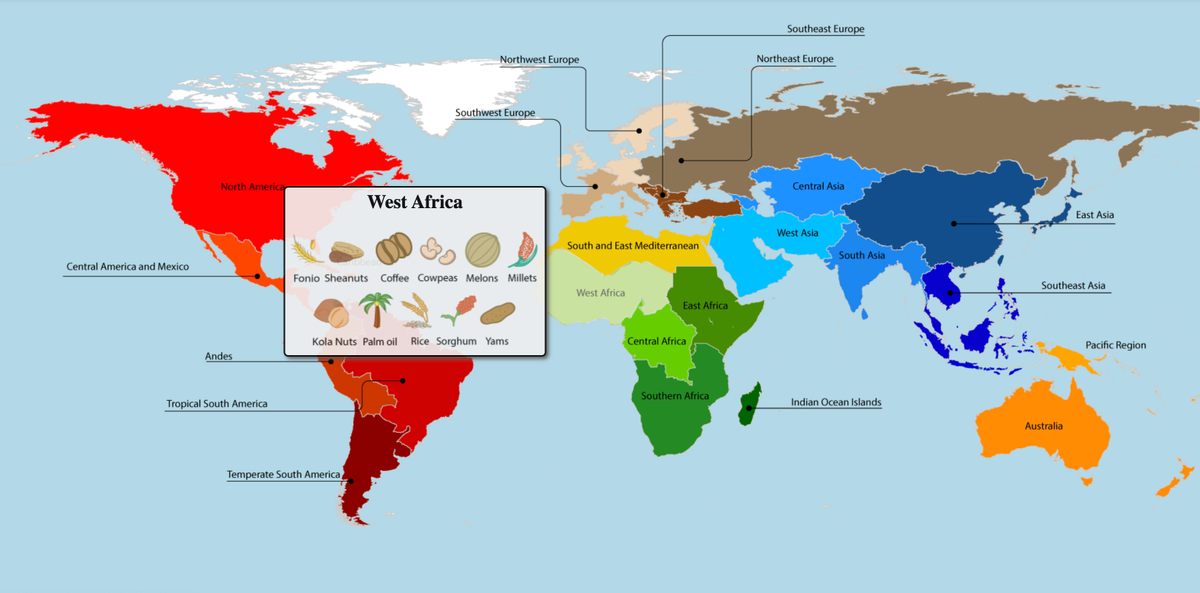
Some of the other salient points in the paper:
- Since the mid-20th century, diets around the world have become more diverse and more homogenous, with supermarkets and other retail outlets the world over increasingly offering a similar range of food options.
- Regions far removed from centers of origin are most dependent on foreign crops. These include Europe, North America, and Australia. For example, about 92.5 percent of the calories consumed in Canada derive from crops originating outside North America.
- Regions with high crop diversity are least dependent on foreign crops. This is so for South Asia and West Africa, for example. Among the countries with the lowest level of “foreign” crop use are Cambodia (19 percent), Bangladesh, and Niger (both 20 percent).
- From 1961 to 2011, foreign crops that produced fat saw the fastest growth. Some of the largest increases took place in Indonesia and Malaysia, with the boom in oil palm production (originally from West and Central Africa); and in Brazil, where soya bean production (originally from East Asia) was adopted on a large scale.
- U.S. farm production focuses on crops from East Asia (soybeans) and Central America (maize), while U.S. food consumption patterns lean heavily on crops from the Mediterranean and West Asia (wheat, barley, chickpea, almonds, etc.)

The paper builds on the groundwork laid in the 1920s by Nikolai Vavilov, a Russian plant genetics rock star. When young, Vavilov had witnessed first-hand how crop failures can lead straight to devastating famines.
As a scientist, his plan was to improve crops so they would no longer fail and had the potential for higher yields. To do that, he looked for their regions of origin, reasoning that the highest species diversity would occur where crops were first domesticated.
Vavilov travelled the world, eventually amassing 250,000 samples of seeds, roots, and fruits—then the largest seed bank in the world. He identified three, and ultimately seven, centers of origin for food crops. Although the sourcing has become a bit more detailed, these “Vavilov centers” still form the basis for research into food origins.
Things didn’t end well for Vavilov. Early in his career, he had mentored one Trofim Lysenko but later became a fierce critic of the latter’s pseudoscientific theories. Unfortunately, Stalin was a fan. Vavilov was arrested in 1940 and sentenced to death. His sentence was commuted to 20 years. Vavilov died in prison in 1943.
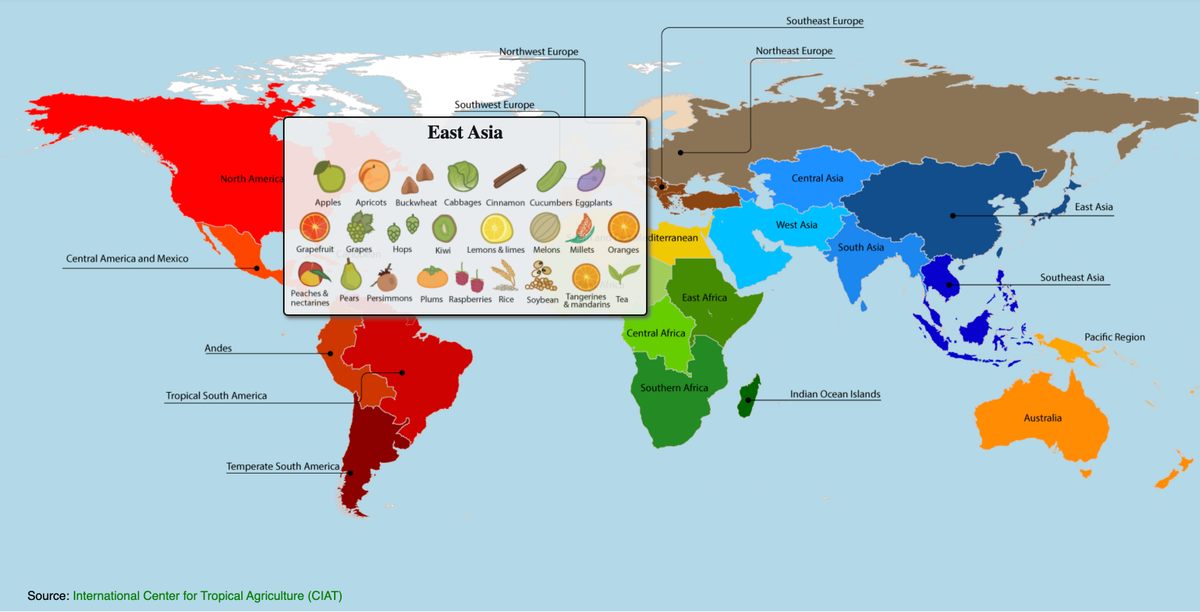
Saved by starving scientists
Meanwhile, Vavilov’s seedbank in Leningrad was threatened by the Nazi siege of the city, which lasted 28 months and caused widespread starvation. But rather than eat the seeds, scientists took turns guarding the collection. The collection survived, but nine of the scientists themselves died of starvation.
In the 1950s, Vavilov was posthumously pardoned and soon regained the status of “Hero of Soviet Science.” Vavilov’s seed bank is now part of an institute that bears his name. There is also a planet and a moon crater named after him. The story of the starving scientists guarding the seed bank has been novelized (Hunger, by Elise Blackwell).
Research into the origins of food crops remains relevant for more than just historical reasons. Wild relatives and related domesticated species of global crops offer the potential to find new genes that may make those crops more resistant to diseases and climate change.
This article originally appeared on Big Think, home of the brightest minds and biggest ideas of all time. Sign up for Big Think’s newsletter.
Gastro Obscura covers the world’s most wondrous food and drink.
Sign up for our regular newsletter.



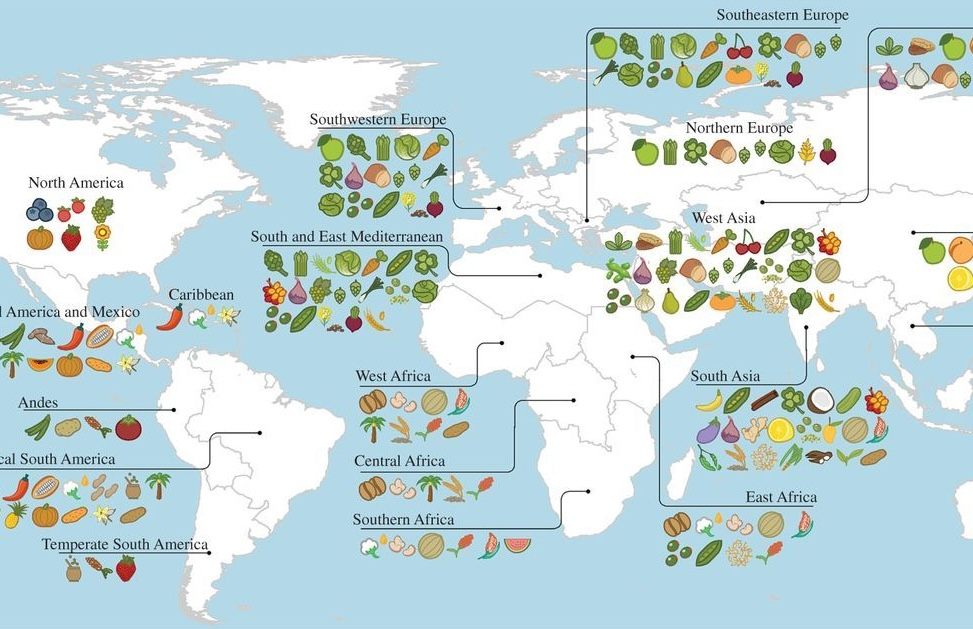


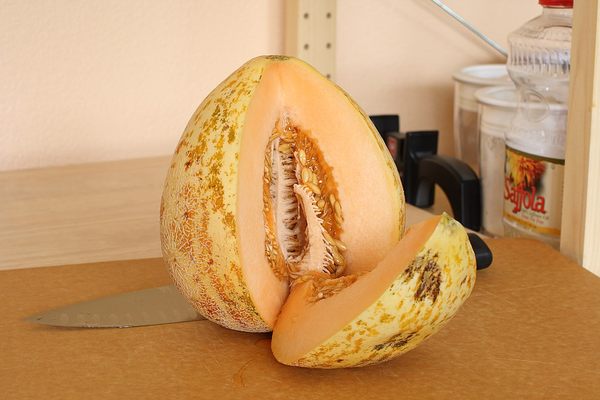





















Follow us on Twitter to get the latest on the world's hidden wonders.
Like us on Facebook to get the latest on the world's hidden wonders.
Follow us on Twitter Like us on Facebook